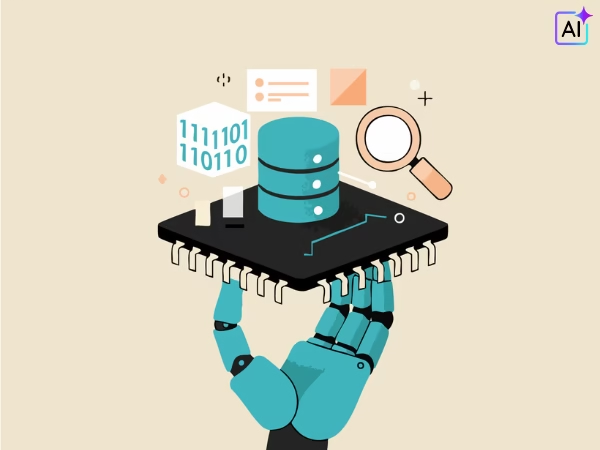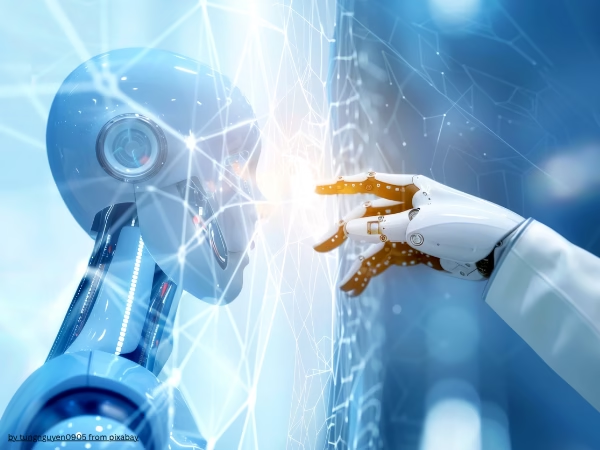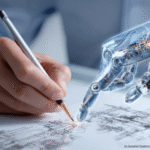In simple words, these domains of artificial intelligence help machines see and understand the world (Perception), think and decide (Reasoning), and perform tasks (Action).
The main areas where artificial intelligence is used are called domains of AI. Experts usually say that AI has three main areas: Perception, Reasoning, and Action.
In contemporary education, particularly in Computer Science and Engineering (CSE), the domains of artificial intelligence are elucidated through sub-disciplines such as Data Science, Computer Vision (CV), and Natural Language Processing (NLP).
One of the most interesting areas of computer science right now is artificial intelligence. But it can be too much for people who are just starting out. Experts break AI down into domains to make it easier to learn.
So, what are AI domains?
Artificial intelligence domains are just groups of tasks that AI systems can do. AI has different “subject areas” called domains, just like a student can study different subjects in school.
For example:
- Some AI is all about seeing and recognizing things: Vision for computers.
- Natural Language Processing is a branch of AI that tries to understand language.
- Some AI is all about looking at numbers and data: Science of Data.
Understanding the 3 domains of AI and their sub-areas gives students and beginners a clear picture of how AI works in real life.
Read should also read AI Letter Writing : Write Professional Letters with AI
What Are the Domains of Artificial Intelligence?
The term domains of artificial intelligence refers to the broad areas where AI techniques are applied. The most widely taught explanation divides AI into three domains:
- Perception (Sensing the World)
- Reasoning (Thinking and Decision Making)
- Action (Performing Tasks)
This is the answer if someone asks: “What are the three domains of AI?” or “Explain the 3 domains of AI.”
The Three Domains of AI Explained
1. Perception (Sensing)
This domain is about how machines sense and understand their environment.
- AI learns to process information from the world, just like humans use their eyes and ears.
- Examples: Computer Vision (CV), speech recognition, Natural Language Processing (NLP).
- Everyday uses: Google Translate, Siri understanding voice commands, self-driving cars detecting pedestrians.
2. Reasoning (Thinking)
This domain is about how machines think and make decisions based on the information they have.
- It includes logic, problem-solving, and predictions.
- Examples: Data Science, Machine Learning, and Expert Systems.
- Everyday uses: Netflix recommendations, Google Maps finding the best route, AI predicting exam results or stock trends.
3. Action (Doing)
This domain is about how machines act and perform tasks in the real world.
- AI applies what it has sensed and reasoned to take real actions.
- Examples: Robotics, drones, autonomous vehicles.
- Everyday uses: Robot vacuum cleaners, delivery robots, warehouse automation.
So, the three domains of artificial intelligence can be remembered as:
Perception = Sensing
Reasoning = Thinking
Action = Doing
Sub-Areas of Artificial Intelligence (CSE Perspective)
In CSE courses, the domains of AI are often explained with practical sub-areas of artificial intelligence. These are specific fields where AI is applied:
1. Data Science
- Focus: gathering, looking at, and making sense of data.
- AI helps find patterns and make guesses.
- For instance, banks use AI to find fraud.
2. Computer Vision (CV)
- Focus: figuring out what pictures or videos mean.
- For example, Facebook lets you tag your friends in pictures, and medical scans can find diseases.
3. Natural Language Processing (NLP)
- Focus: working with human language.
- Example: chatbots, Google Translate, AI content tools.
4. Machine Learning (ML)
- Focus: teaching machines to learn from data.
- Example: spam email detection, shopping recommendations.
5. Robotics
- Focus: combining sensing, reasoning, and action in real-world machines.
- Example: self-driving cars, warehouse robots.
6. Expert Systems
- Focus: solving specific problems using stored knowledge.
- Example: medical diagnosis support systems.
Task Domain of AI
The term task domain of AI is used when we talk about the specific tasks AI can perform. For example:
- Vision tasks → detecting objects in an image.
- Language tasks → translating text from English to Hindi.
- Decision tasks → predicting exam results or weather.
Each sub-area of artificial intelligence belongs to a task domain that defines what it can do.
Domains of AI in CSE
For Computer Science and Engineering students, understanding domains in CSE is very important. AI is not only about coding, it’s about knowing where to apply those codes.
In CSE:
- Perception connects to Computer Vision & NLP.
- Reasoning connects to Data Science & ML.
- Action connects to Robotics & Automation.
This breakdown helps students to connect theory with practical projects.
Why Understanding AI Domains Matters
- Makes AI less confusing for beginners.
- Helps in selecting the right specialization (ML, CV, NLP, Robotics).
- Useful in CSE careers → data science jobs, AI research, software engineering.
- Helps in real-world problem solving → from healthcare to finance.
The domains of AI give us a structured way to understand artificial intelligence. Traditionally, we divide them into the three domains of AI: Perception, Reasoning, and Action. These are the foundations of AI thinking.
At the same time, in CSE education and real-world use, we study sub-areas of artificial intelligence like Data Science, Computer Vision, NLP, Machine Learning, Robotics, and Expert Systems.
So next time someone asks, “What are domains of AI?” you can confidently say:
The three domains of artificial intelligence are Perception, Reasoning, and Action, and they are supported by many sub-domains like CV, NLP, and Data Science.
This idea helps students, beginners, and professionals understand how AI is used in many places, from Netflix recommendations to self-driving cars.
FAQs About Domains of AI
Q1. What are the three areas of AI?
AI has three main areas: perception, reasoning, and action. AI can sense things with perception, think with reasoning, and do things with action.
Q2. What are the different parts of artificial intelligence?
Some of the subfields are computer vision, data science, natural language processing (NLP), robotics, machine learning, and expert systems.
Q3. What is the area of work for AI?
In AI, a task domain is the specific job that an AI system is made to do, like recognizing images, translating languages, or making decisions.
Q4. What do CSE students learn about different areas of AI?
In CSE classes, different areas of AI are taught through theory (Perception, Reasoning, Action) and hands-on work in fields like Data Science, NLP, and Robotics.









[…] You should see this also Exploring Domains of AI (Artificial Intelligence) […]
[…] you want to understand this concept better, our post “Exploring Domains of AI (Artificial Intelligence)” explains how AI is divided into areas such as learning, reasoning, and perception. Each of these […]